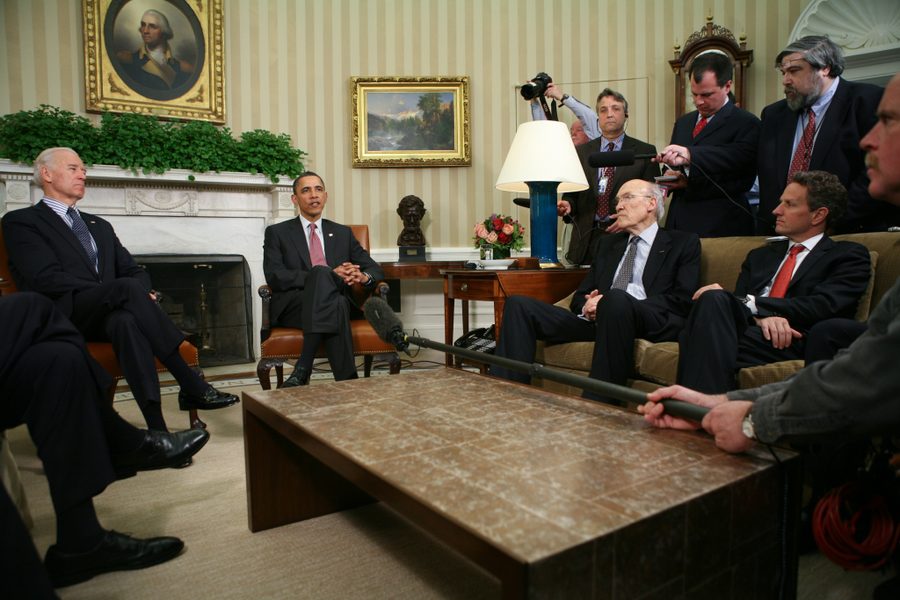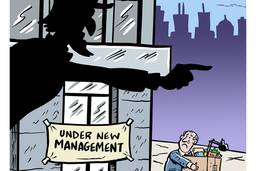Debt Ceiling Deja Vu
Then and now, how does the bipartisan embrace of austerity help working people?
In These Times Editors

Congress needs to pay its bills again, and defaulting could throw the United States into willful economic catastrophe. The debt limit — the cap on the federal government’s borrowing — has been raised or suspended nearly 100 times in U.S. history, including three times under the Trump administration. During the 2011 debt-ceiling crisis, In These Times senior editor David Moberg cited the culpability of not only conservatives (who believed in cutting “entitlements”) but former President Barack Obama, who played into the politics of austerity. A decade later, the question becomes: Could President Joe Biden and the congressional Democrats finally be ready to defy the GOP’s brinkmanship?
In August 2011, David Moberg wrote:
The debt-ceiling crisis was a manufactured pseudo-event with real consequences. But at least one thing is clear about the trillion-dollar deficit reduction deal Democratic and Republican negotiators reached on July 31 and passed into law this week: Economic inanity and political mendacity will generate social calamity. The deal cuts about $1 trillion from discretionary spending (from the military — but not ongoing wars — to education and environmental protection) over the next decade. A congressional joint committee will come up with $1.5 trillion more in cuts. If Congress doesn’t implement those recommendations by the end of the year, automatic cuts will be imposed on “entitlements,” or mandatory programs like Medicare.
The fault lies mainly with Republicans. … They used blackmail over raising the debt ceiling to advance a single-minded agenda to starve and shrink government. Yet even the prospect of filling a few tax loopholes for the super-rich killed a deal offering virtually everything they wanted. And now Republicans dangerously insist that deep cuts will be the price of all bills to lift the debt ceiling in the future as well.
[T]hough he admirably insists the rich ought to pay more, Obama believes the federal debt is the nation’s biggest challenge and that the only solution is to cut “entitlements” — breaking the social contract that Democrats claim as their hallmark.
He need not — and should not — do so. The short-term deficit should increase to stimulate the economy, and the long-range debt problem should be solved by reversing its major causes: tax cuts for the rich, two wars, a deep recession induced by a financial crisis and healthcare inflation. The Congressional Progressive Caucus has shown how to reduce the deficit over a decade by more than double Obama’s or House Speaker John Boehner’s goal while protecting important, popular programs.
Obama may be pursuing economic austerity for reasons political — thinking it will help his reelection or economic — even though he seems to recognize the need for government investment. On both counts, he’s dangerously wrong.
The debt-limit debacle, moreover, has shifted attention away from the real crisis: persistent high unemployment and slow job growth. Worse, the bipartisan embrace of austerity makes it harder to create jobs.
Obama could push for — maybe even enact administratively — many small measures to boost jobs: for example, renew extended unemployment insurance, expand support for short work weeks, promote Buy American policies, continue clean energy loans, expand the existing student loan rebate program, use Fannie Mae influence to guarantee financially troubled homeowners the right to rent their homes.
Obama could push for federal public-service jobs, expanded infrastructure spending, energy efficiency support, aid to state and local governments or a higher minimum wage. Unlike Obama’s current course, such policies to reduce unemployment and the deficit … may be enough to keep hope alive.








